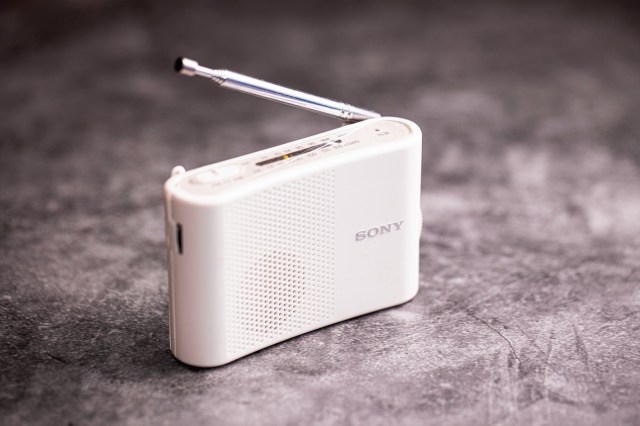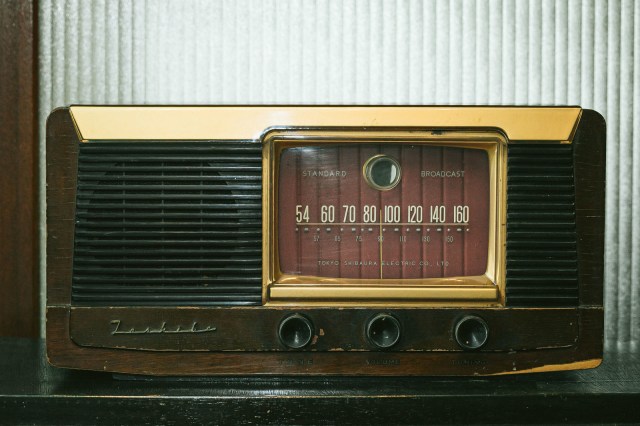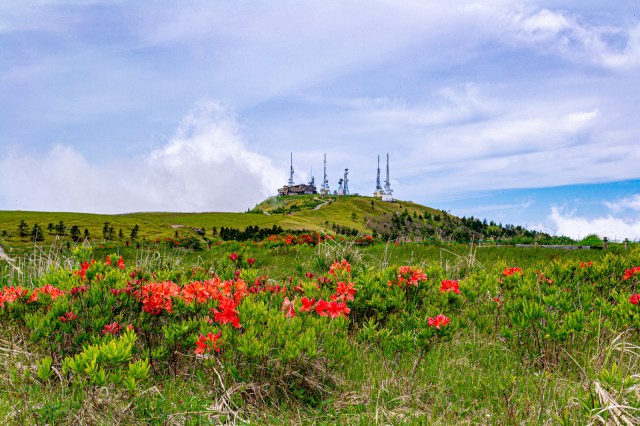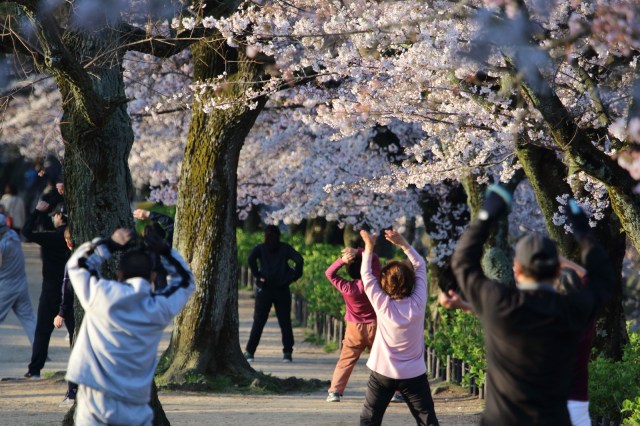
Amidst the number of closed businesses and beleaguered industries, one has made a surprise comeback.
Unsurprisingly, a pandemic is no good time for anyone or anything. From shuttered factory doors to cultural traditions ambling on their last legs, COVID-19 has done its work, in fact, even inspiring a new and now commonly used phrase for the worldwide turmoil it has caused: “koronaka,” or literally in English, “corona damage.” But like all things in life, some silver linings have arisen from this situation, and this is especially the case for the amateur radio community.
▼ Can’t wait to whip out grandmama and grandpapa’s old set!
According to the Japan Amateur Radio League (JARL), for the first time in 27 years, an increase in membership was recorded in 2020 with 578 new members, putting the total number of JARL participants at 65,788 individuals.
While 578 new members doesn’t sound like a monumental increase, it’s still rather impressive as given the plethora of smartphones nowadays and every-rising Internet usage, one would expect amateur radio’s popularity to exponentially wane over the years versus encountering any kind of growth in interest, or in the JARL’s case, membership. So why are folks in Japan pursuing amateur radio as their pandemic passion project? It comes down to two reasons: lack of human contact and easing of government restrictions.
▼ Maintaining those radio towers might seem like a lonesome endeavor, but it’s all the better with distant company.
With COVID-19 preventative policies stressing measures like social distancing, it’s no surprise some folks are bunkering down at home and looking for new as well as safe hobbies which don’t require going out or talking to other people face-to-face. Amateur radio is perfect for this, because all you really need is the proper paperwork and a radio, which contrary to popular belief, isn’t entirely a relic yet.
Interestingly enough, another factor completely unrelated to COVID-19 which has given the amateur radio community a boost in its numbers is a new ordinance passed by the Japanese government in March 2021, essentially easing restrictions on who can operate a radio. In the past, you would have to be a licensed radio operator, but with the government’s revisions, anyone can operate a radio station as long as they’re working with or are supervised by an individual who is already certified as a radio operator. Regardless of your personal background, it’s definitely become more accessible to reach out over Japan’s air waves.
▼ Let’s be real though: radio will never die in Japan as long as we have the iconic radio taiso, or radio calisthenics!
Naturally, for Japanese netizens who roam the Internet, both within its more familiar grounds and everything-goes frontiers, many were still mystified by the increase in amateur radio enthusiasts.
“Huh, I would’ve expected more YouTubers, but I guess the situation turned out like this.”
“Guys, they’re getting ready for post-apocalyptic society.”
“I’m interested in this, but gotta say, it’s a pain to rent out your own radio wave.”
“I wonder how many people you can communicate with over the radio though?”
On a finishing note, an additional silver lining to this situation is that more accessible radio operation means more telecommunication channels are available in dire times. Radio has played a large role in confirming the safety of individuals or delivering emergency announcements before, during, and after natural disasters, and with more amateur radio operators signing up, we’re certain their local communities will appreciate it, whether the new, local radio station belongs to an aspiring disc jockey or an etiquette enthusiast holding their own talk show.
Source: Sankei News via Hachima Kiko
Top image: Pakutaso
Insert images: Pakutaso (1, 2, 3)
● Want to hear about SoraNews24’s latest articles as soon as they’re published? Follow us on Facebook and Twitter!



 Evangelion loafers – Never worry about tying your shoes or failing to make an impression
Evangelion loafers – Never worry about tying your shoes or failing to make an impression Sazae Radio: Now you can hear a lot more than just the ocean in a seashell!
Sazae Radio: Now you can hear a lot more than just the ocean in a seashell! Yakuza leadership airs complaints about COVID-19’s effect on money gains and operations
Yakuza leadership airs complaints about COVID-19’s effect on money gains and operations Is North Korea really forcing its young men to get Kim Jong-un’s haircut? Probably not…
Is North Korea really forcing its young men to get Kim Jong-un’s haircut? Probably not… Pokémon Lucario becomes official radio calisthenics promoter for kids across Japan【Video】
Pokémon Lucario becomes official radio calisthenics promoter for kids across Japan【Video】 How to order snacks on a Shinkansen bullet train in Japan
How to order snacks on a Shinkansen bullet train in Japan New Pokémon ice cream, dessert drinks, and cool merch coming to Baskin-Robbins Japan【Pics】
New Pokémon ice cream, dessert drinks, and cool merch coming to Baskin-Robbins Japan【Pics】 Japan’s new difficult-to-drink-from beer glass protects your liver, but it’s a brutal experience
Japan’s new difficult-to-drink-from beer glass protects your liver, but it’s a brutal experience Demon Slayer: Kimetsu no Yaiba gets new roller coaster attractions and food at Universal Studios Japan
Demon Slayer: Kimetsu no Yaiba gets new roller coaster attractions and food at Universal Studios Japan Burger King Japan suddenly adds Dr. Pepper and Dr. Pepper floats to its menu nationwide
Burger King Japan suddenly adds Dr. Pepper and Dr. Pepper floats to its menu nationwide High-fashion Totoro cuddle purse is like an elegant stroll in the forest【Photos】
High-fashion Totoro cuddle purse is like an elegant stroll in the forest【Photos】 Hello, cosmetics! Clinique teams up with Hello Kitty this summer for first-time collaboration
Hello, cosmetics! Clinique teams up with Hello Kitty this summer for first-time collaboration To combat declining birth rate, Japan to begin offering “Breeding Visas” to foreigners
To combat declining birth rate, Japan to begin offering “Breeding Visas” to foreigners Russian crocodile hospitalized after woman falls on it
Russian crocodile hospitalized after woman falls on it Starbucks Japan welcomes alpacas for cute summer drinkware line【Photos】
Starbucks Japan welcomes alpacas for cute summer drinkware line【Photos】 Nintendo history you can feel – Super NES, N64, and GameCube controllers become capsule toys
Nintendo history you can feel – Super NES, N64, and GameCube controllers become capsule toys “The most Delicious Cup Noodle in history” – Japan’s French Cup Noodle wins our heart【Taste test】
“The most Delicious Cup Noodle in history” – Japan’s French Cup Noodle wins our heart【Taste test】 Starbucks releases a cute Frappuccino and Unicorn Cake…but not in Japan
Starbucks releases a cute Frappuccino and Unicorn Cake…but not in Japan Kyoto Tower mascot termination reveals dark side behind cute Japanese characters
Kyoto Tower mascot termination reveals dark side behind cute Japanese characters McDonald’s Japan’s Soft Twist Tower: A phantom ice cream only sold at select branches
McDonald’s Japan’s Soft Twist Tower: A phantom ice cream only sold at select branches Yabai Ramen: What makes this Japanese ramen so dangerous?
Yabai Ramen: What makes this Japanese ramen so dangerous? Finally! Nintendo Japan expands Switch 8-bit controller sales to everybody, Online member or not
Finally! Nintendo Japan expands Switch 8-bit controller sales to everybody, Online member or not Japanese government wants to build luxury resorts in all national parks for foreign tourists
Japanese government wants to build luxury resorts in all national parks for foreign tourists 10 things you should buy at 7-Eleven in Japan
10 things you should buy at 7-Eleven in Japan Studio Ghibli releases anime heroine cosplay dresses that are super comfy to wear
Studio Ghibli releases anime heroine cosplay dresses that are super comfy to wear Woman charged for driving suitcase without a license in Osaka
Woman charged for driving suitcase without a license in Osaka Studio Ghibli unveils My Neighbour Totoro miniature house model
Studio Ghibli unveils My Neighbour Totoro miniature house model Kyoto experiencing problems with foreign tourists not paying for bus fares, but not on purpose
Kyoto experiencing problems with foreign tourists not paying for bus fares, but not on purpose Fighting mild hunger with a Japanese soda that turns into jelly in the stomach【Taste test】
Fighting mild hunger with a Japanese soda that turns into jelly in the stomach【Taste test】 Studio Ghibli’s Howl’s Moving Castle tapestry unveiled in Japan for first time
Studio Ghibli’s Howl’s Moving Castle tapestry unveiled in Japan for first time McDonald’s new Happy Meals offer up cute and practical Sanrio lifestyle goods
McDonald’s new Happy Meals offer up cute and practical Sanrio lifestyle goods Sales of Japan’s most convenient train ticket/shopping payment cards suspended indefinitely
Sales of Japan’s most convenient train ticket/shopping payment cards suspended indefinitely Sold-out Studio Ghibli desktop humidifiers are back so Totoro can help you through the dry season
Sold-out Studio Ghibli desktop humidifiers are back so Totoro can help you through the dry season Japanese government to make first change to romanization spelling rules since the 1950s
Japanese government to make first change to romanization spelling rules since the 1950s Foreigner’s request for help in Tokyo makes us sad for the state of society
Foreigner’s request for help in Tokyo makes us sad for the state of society Ghibli founders Toshio Suzuki and Hayao Miyazaki contribute to Japanese whisky Totoro label design
Ghibli founders Toshio Suzuki and Hayao Miyazaki contribute to Japanese whisky Totoro label design Doraemon found buried at sea as scene from 1993 anime becomes real life【Photos】
Doraemon found buried at sea as scene from 1993 anime becomes real life【Photos】 Tokyo’s most famous Starbucks is closed
Tokyo’s most famous Starbucks is closed Princesses, fruits, and blacksmiths: Study reveals the 30 most unusual family names in Japan
Princesses, fruits, and blacksmiths: Study reveals the 30 most unusual family names in Japan Japanese radio host arrested after beating female co-host with microphone during live broadcast
Japanese radio host arrested after beating female co-host with microphone during live broadcast 74-year-old Japanese politician starts Instagram account for open dialog about COVID-19
74-year-old Japanese politician starts Instagram account for open dialog about COVID-19 Fullmetal Alchemist, One Piece Voice Actor Ed Blaylock Passes Away
Fullmetal Alchemist, One Piece Voice Actor Ed Blaylock Passes Away Population aging in Japan gets a corona-boost as pregnancies drop by 11 percent this year
Population aging in Japan gets a corona-boost as pregnancies drop by 11 percent this year “No ball games” & “No practicing comedy routines”: City Parks in Japan let you do less and less
“No ball games” & “No practicing comedy routines”: City Parks in Japan let you do less and less Kyoto University finds alpacas may hold the key to preventing all COVID-19 variants
Kyoto University finds alpacas may hold the key to preventing all COVID-19 variants Toyama Prefectural University able to locate potential COVID-19 clusters from raw sewage
Toyama Prefectural University able to locate potential COVID-19 clusters from raw sewage Yokohama finally releases details on futuristic theme park set to open in 2031
Yokohama finally releases details on futuristic theme park set to open in 2031 Baffling building in Japan looks like a graphics glitch in real life
Baffling building in Japan looks like a graphics glitch in real life Akihabara Radio Kaikan’s gacha capsule toy lucky bag is an otaku delight【Photos】
Akihabara Radio Kaikan’s gacha capsule toy lucky bag is an otaku delight【Photos】 Saitama senior arrested after calling telecom provider 24,000 times to complain
Saitama senior arrested after calling telecom provider 24,000 times to complain Tokyo Olympics bans fans from posting videos of the Games on their social media accounts
Tokyo Olympics bans fans from posting videos of the Games on their social media accounts Home-hunting in Japan changes as people eye new communities in wake of COVID-19
Home-hunting in Japan changes as people eye new communities in wake of COVID-19 Japanese chef shows off amazing cooking skills with high-flying omelettes 【Video】
Japanese chef shows off amazing cooking skills with high-flying omelettes 【Video】 Cool new alarm clock earphones wake you up not with sound, but vibrations
Cool new alarm clock earphones wake you up not with sound, but vibrations
Leave a Reply